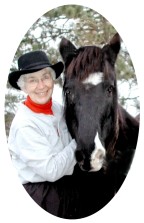She put the pedal to the metal!
How safe are you
when you're driving?
"Risk awareness" - do you know how safe you are when you're driving?
Researchers from the University of Minnesota’s HumanFIRST program and the Intelligent Vehicles Laboratory are hoping to reduce crashes by providing drivers with some new road signs that present information about traffic.
Many area folks volunteered to take part in the "Study to Measure Intersection Behavior" they conducted last fall.
At the Minnesota Department of Transportation site southwest of
I was asked to drive a car that was equipped with computers that collect "driving behavior" data. At the end of the study I learned that these computers kept track of my GPS location and my speed while I was driving through the intersection.
There were almost a dozen cameras recording everything that happened inside and outside the car. Justin accompanied me during the test. He sat in the back checking all the computers and providing instructions on the driving tasks he wanted me to do. Part of my instructions were to drive as, “I normally would…”
Specifically, I was asked to make several types of typical driving maneuvers through the intersection of Highway 52 and County Road 9 near Wastedo (about 10 miles south of
The HumanFIRST researchers were conducting this study to investigate the effectiveness of a new traffic sign that was designed to assist drivers entering this type of intersection and help reduce traffic crashes.
Justin described the signs as similar to "giant television screens that displayed icons resembling the traffic approaching from the southbound lane and northbound lane.” There were several of these signs placed at various locations in and across the intersection.
Just getting out on the road for the test turned out to have some problems for me! The first time we tried a couple of test runs the researchers found the recorders weren't working. (Should I have told them that I have had strange problems with computers before?)
Another time the test car had a flat tire. The next time the battery had died. But they got that fixed and we soon headed out on the road.
One of the types of crashes these special signs are intended to reduce was the situation I experienced during the first half of the study when the signs were turned off.
Justin was sitting in the back seat as usual. I was driving from the west on C. R. 9 and making a left turn into the northbound lane on Highway 52.
While waiting in the median, monitoring traffic as normal, I saw what appeared to be a safe gap in traffic and pulled out. After I made my turn, I took a quick glance in the rear view mirror and to my shock saw a semi-truck barreling down on us from behind. The semi hadn't been there when I pulled out! I stepped on the accelerator and got out of there.
As I returned to the starting position of the test drive I took a deep breath and thought I'd better tell Justin that I didn't see the semi in my lane when I pulled out. Justin, who had remained silent during the drive replied, “He merged into your lane after you turned.” (Guess he was watching too!)
He recalled another time when an older female driver made a painfully slow maneuver crossing the intersection but didn’t realize a fast-approaching semi nearly hit them.
Justin compared this to a similar but separate situation when a risk-taking younger male driver participated in this study. He explained, “But it seemed that he knew the situation. So, although he chose similar gaps in traffic compared to the older female driver, his driving behavior reflected that he was aware of what he was doing, while her driving did not reflect that she was aware of the near-collision."
The goal of this study was to see if drivers’ behaviors were different with the new signs.
Justin added: "I think a big part of the problem is that drivers are seldom aware of the risk they are in when they are behind the wheel… We’re hoping that these signs might help increase drivers’ risk-awareness.”
The study by itself has probably already helped those of us who took part become more "risk-aware" drivers!
.


